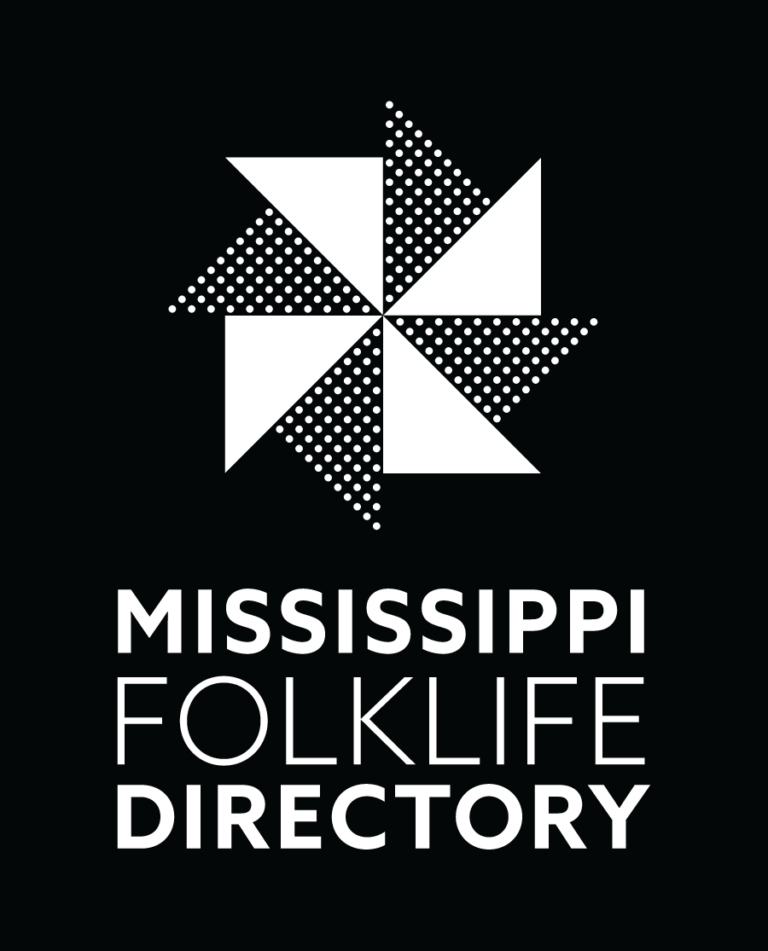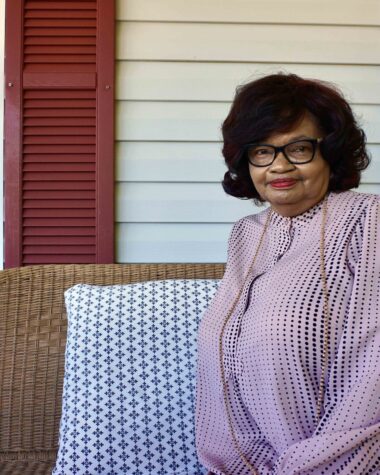Growing up in Itawamba County, Mississippi, Victoria Cummings-Bobo learned from her Granny the value of making beautiful objects out of repurposed materials. Cummings-Bobo recalls that her Granny built small pieces of furniture, like stools: “She built them herself, with little pieces of wood that she would find outside that someone might have thrown away. She would just take it and make something out of it. So I watched that.” Cummings-Bobo also watched the way her Granny used color around the house. Her Granny often painted the house—doors, stairs, and window panes—in bright hues of orange, yellow, and green. “She was something else. She loved vibrant colors. And I think I have inherited that from Granny,” Cummings-Bobo says.
In high school and college, Cummings-Bobo developed skills as a writer, writing short stories and poetry. In the 70s and 80s, she lived in New York City and was introduced to a range of arts and cultures, including theater. When she moved back to Mississippi, she self-published three books of poetry and wrote several plays that were performed in local churches. Aside from being inspired by her Granny, Cummings-Bobo cites two developments that led her toward visual art. One, she decided she wanted visuals to accompany her poetry. Two, in her work as a Sunday School teacher, she started dressing mannequins like Bible characters to help tell stories from the Bible. “I used a lot of wigs, I used a lot of acrylic paint. I used a lot of broom stick handles.” People began saving things to give to Cummings-Bobo to use for her creations. “Old sheets, whatever I could use—curtain rods—to make these mannequins.”
Today, Cummings-Bobo is a self-described “folk artist.” She creates 2-D and 3-D work using acrylic and oil paints, along with all manner of found, gifted, and recycled objects—things like seashells, rocks, wasp nests, cardboard packaging, broken jewelry, plastic bottles, and lamp parts. Her colorful work often references her memories of childhood in Itawamba County. She depicts churches, outhouses, and the cotton industry. Some of her work speaks to her religious devotion and her desire for social equality, while other work conveys her sense of humor. Cummings-Bobo has shown her work at various community spaces in Northeast Mississippi, including at W.O. Benjamin Fine Arts Center on the campus of Itawamba Community College.
Repurposing materials is an important component of Cummings-Bobo’s work. It expresses values she learned from her family, along with her feelings about humans’ impact on the environment. “I try to give things that people throw away a second life. There are so many things that we throw away everyday,” Cummings-Bobo says. “There are containers—we pollute so much. So I try to just make a difference in showing that things can be pretty if you take the time.” The materials she uses also connect Cummings-Bobo to her community. Often, family and friends give her objects to use in her pieces.
-Nicole Musgrave

